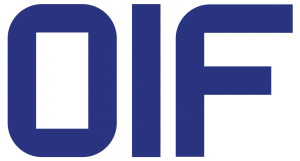OIF Approves IC-TROSA Implementation Agreement, Specifications Speed Delivery of a Higher Level of Integration for Transmit and Receive Optical Components
IC-TROSA IA enables miniaturization of optical transceiver modules and lowers the component cost for 400ZR, metro, data center interconnect (DCI) applications
Fremont, Calif.—September 23, 2019 – OIF, where the optical networking industry’s interoperability work gets done, continues its efforts to reduce cost and speed market adoption of next-generation solutions through the approval of the Integrated Coherent Transmitter-Receiver Optical Subassembly (IC-TROSA) Implementation Agreement (IA). IC-TROSA integration will be demonstrated during this week’s OIF Physical and Link Layer (PLL) Interoperability Demo at ECOC 2019 in Dublin, Ireland (OIF booth 441).
“The IC-TROSA project took an aggressive approach to coherent optical component integration and has delivered two new package designs incorporating TX and RX integration, common digital controls and performance monitoring all in a small form factor package,” explained Scott Grindstaff, Director R&D, ADVA, and IC-TROSA IA Technical Editor. “Additionally, package specific features such as fiber-free interface and solder reflow compatibility have been incorporated.”
The optical sub-assembly supports high-bandwidth and high-order dual-polarization quadrature amplitude modulation (QAM) operations and is suited for data center interconnect, metro and long-haul applications. As module sizes decrease, coherent optics components need similar size reductions to enable next generation multi-terabit switches, line cards and transport platforms.
“The IC-TROSA IA is a solution for density requirements for line cards, front-pluggable and future on-board coherent 400G+ optical modules,” said Karl Gass, OIF PLL Working Group, Optical Vice Chair. “It aims to standardize a photonic package for coherent applications that is easy to use while leaving the internal implementation to the vendor.”
The IC-TROSA Type-1 is optimized for silicon photonics technology and uses a surface-mount package with Ball Grid Array (BGA) electrical interface. Important advantages include an increased electrical bandwidth and solder reflow capability. The IC-TROSA Type-2 is optimized for Indium Phosphide technology and uses a gold-box package with flex-cable electrical interface. Important advantages include an integrated tunable laser and a duplex LC optical connector.
The IC-TROSA’s low power dissipation and miniature footprint enables small form factor digital coherent optics (DCO) transceivers in a QSFP-DD or OSFP form factor, as well as very high-density coherent line card or daughtercard designs. Devices can support multiple modulation formats, including QPSK, 8QAM, and 16QAM, at symbol rates up to 64Gbaud, enabling data transmission up to 600 Gb/s.
About OIF
OIF is where the optical networking industry’s interoperability work gets done. Building on 20 years of effecting forward change in the industry, OIF represents the dynamic ecosystem of 100+ industry leading network operators, system vendors, component vendors and test equipment vendors collaborating to develop interoperable electrical, optical and control solutions that directly impact the industry’s ecosystem and facilitate global connectivity in the open network world. Connect with OIF at @OIForum, on LinkedIn and at http://www.oiforum.com.
PR Contact:
Leah Wilkinson
Wilkinson + Associates for OIF
Email: leah@wilkinson.associates
Office: 703-907-0010

